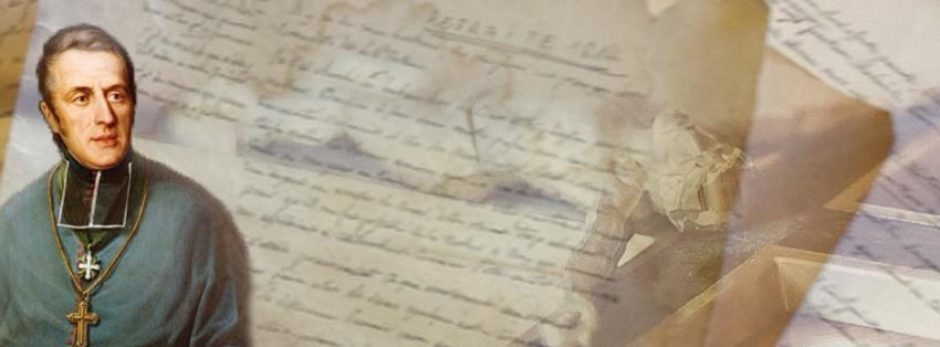Writing to Henri Tempier and the novices and young students at Laus:
I have drawn up right away the list of our rooms and have chosen the guardian saints that I wish to give to each dweller in them. Our patron saints would be already installed if we had found the pictures of all those whom we want to have as guests.
Letter to Henri Tempier, 9 January 1821, E.O. VI n. 58
Eugene was profoundly aware of the importance of the communion of the saints – our ancestors in the faith. “Saints” in the usage of St. Paul referred to the communion of all baptized Christians, united and connected with one another in Jesus Christ, and which continued beyond their death in the fullness of the Kingdom.
Tempier had written to Eugene to tell him how each room at Laus had been dedicated to a saint. They had decided that this was not going to be an empty gesture, but that the occupant of each room had to spend time reflecting and praying around that particular saint who would be his “guest.”
How are we—saints in process—related to the saints who have entered into the fullness of divine life? Elizabeth Johnson, in her splendid book on the communion of saints called Friends of God and Prophets, speaks of two different paradigms for understanding that relationship: “one an egalitarian model that names [the saints] as companions and friends, the other a patriarchal [model] that casts certain privileged dead into positions of patronage.”
In the first model they are that wonderful “cloud of witnesses” spoken of in Hebrews (12:1) who are our friends, encouraging us, rooting for us, also challenging us to complete the work they had begun.
In the second model, they are seen as heavenly intercessors around the throne of God who manipulate heavenly strings for us. We are their clients and they are our patrons. William H. Shannon

Today is the day that David MacPhee makes his Perpetual Vows, a day of celebration and joy for David and for all of the Oblates of Mary Immaculate and their greater family. Join in with us today as we witness to God’s love and David’s reponse to that love!
What a wonderful idea. I really like that idea of dedicating a room to a saint and then spending time with them (the saint). I believe in the communion of saints, but I guess I need to question how I live out that belief. I think it might be hit-and-miss. This has got me thinking and reflecting. How often to I pass by a church and really dwell on it. I must admit, sheepishly that first thing I do when driving past a church is to look at the sign to see if it is catholic or not. The name is always secondary and I don’t usually spend a lot, if any time thinking about the name and what is behind that.
I know that when I go up to Galilee Centre I always go and spend time at St. Theresa’s – the Oblate Cemetery that is there. I usually go to spend time with the “guys”, talk with a few of them, ask them to pray for me and help me and just sit and spend time with them. I have never though questioned why it is named St. Theresa’s and why she is the guardian.
Todays writing invites me to even more though. It is an invitation to learn more – about myself, how I think of and relate to the saints, it invites me to look past myself. At first glance I would say it is mostly with the first model – those clouds of witness – and perhaps the second model only rarely. A bit of both as the lines in my reality are sort of blurred. I love the idea of being a part of the “saints in process” – it was St. Eugene who spoke so clearly to my heart about that desire.